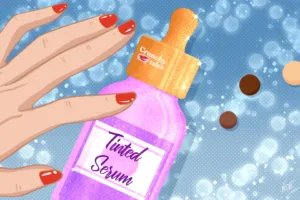Why Primer Is The Secret To Flawless Makeup After 50
When you’re finding your make-up is noticeably sitting in fine lines, pores, around blemishes or imperfections, it’s time to introduce a primer in your beauty case. Considered by make-up artists the perfect powerhouse to make our mature skin look smoother while giving it an instant lift, it can be a surefire way to keep your makeup looking fresh all day, too.
Face primers have long become a staple in our makeup bag, for good reason – explains the British beauty guru Charlotte Tilbury-. Skincare and makeup work together to create a flawless canvas and primer is a wonderful hybrid between the two that can have the power to transform the look of your skin whilst keeping your makeup in place all-day
Not all primers are created equally, though. They might come in the form of a hyaluronic acid facial serum that boosts hydration, a sunscreen that protects and softens the appearance of pores, or a traditional silicone-based primer that smooths and blurs.
If you’ve never used one before, keep reading to find out what these products do, how long they last, and which one is best for your face.
Which primer should I use?
To be able to choose the right primer, you need to understand your skin type.
If you have oily skin, you should reach for a mattifying product; it can help keep your base looking fresh but not too shiny. For a dry epidermis, you need a gel-based or illuminating primer with anti-ageing ingredients to create the illusion of a youthful glow. It will hydrate your skin, make it look radiant preventing your foundation and powder to settle into lines.
I suggest trying a primer with a lighter weight—typically those sit best on mature skin without accentuating what you’re trying to smooth out – says international makeup artist Christine Cherbonnier. I know it may seem like you should add extra coverage as your skin ages, but try to resist the urge if you can. Mature skin is beautiful and can really benefit from a lighter touch.
For those with combination skin, you might want to use a primer with light-reflecting particles. That can make your face look dewy and luminous for an enviable, healthy glow.
But what if you’re hoping to reduce redness? Then a colour-correcting primer will do the job.
A lot of us have issues with redness and discolouration of the skin – says Charlotte Tilbury-. Face primers offer a wonderful remedy to help even out skin tone and colour-correct the appearance of redness. By doing this before your foundation or concealer, you can eliminate the look of discolouration for a more even-looking complexion. This can help you see where you need further coverage with makeup and where you can go without it.
How should I apply primer?
The most popular way to use a primer is after your last skin-care step and before your makeup. However you can buff in your foundation on top, or you can even mix it together for a sheer, dewy glow. If so, just warm it a little on the back of your hand and add foundation by the drop until you reach a consistency and colour that work for you. Use your fingers to control the spreadability and make sure the primer doesn’t pile up or gather anywhere on the skin.
What are the most common primer mistakes?
A good primer creates the perfect canvas for your makeup to glide on and keeps it from budging, all day long. However, using the wrong one will make no difference in your makeup look whatsoever.
One of the main missteps women make when it comes to priming is applying makeup too soon afterwards. Primer needs a few minutes to settle onto your skin and create that smooth base for other products to glide on.
Another primer mistake that you may be making is adding too little or too much product on the face. Use just a pea-sized blob for your entire face to ensure a flawless makeup application. And don’t forget to put some drops onto your eyelids to avoid fading eye-shadows over time. Nobody likes the panda eyes effect.
Like this post? Support Us or Sign up to our newsletter to get more articles like this delivered straight to your inbox!





